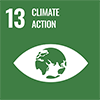We go beyond just compliance by implementing proactive strategies to reduce our emissions. We design, construct, and maintain our facilities to ensure consistent emissions management.

Hunt supports the global desire to reduce emissions and curb the effects of climate change. We have adopted various operational strategies to manage and reduce emissions and improve efficiencies through innovation. We follow industry best practices, which include utilizing proven technologies and new ideas.
At Hunt, greenhouse gas (GHG) emissions associated with our operations are continuously monitored for opportunities to improve efficiencies and minimize emissions. In order to effectively control and minimize the volumes of emissions associated with our operations, we rely on a combination of industry best practices, regulatory commitments, and operational controls.
Our GHG emissions reporting in North America aligns with the US Environmental Protection Agency (EPA) GHG reporting program, which prescribes that each emission source category, methodologies, engineering calculations and emission factors are set forth in the applicable regulations to quantify GHG emissions, including methane.
2023 CO2e Emissions by Source
One of the leading contributors to flaring is unplanned pipeline downtime. This is why we partner with third-party operators to implement strategies that mitigate potential pipeline constraints reducing the need for flaring. We are constantly looking for creative ways to find efficiencies and repurpose production outputs that decrease reliance on flaring, where possible.
Overall flaring reduced by 37% globally from 2019 to 2023 with North America experiencing the majority of these reductions. This was mainly due to midstream availability and improved processes.
Emissions Reduction in Action
One of the key functions of our Management System is to ensure continuous improvement across all areas of operation. Emission reduction strategies have been bolstered as a result of these improvements in the areas of facility design and operational management:








